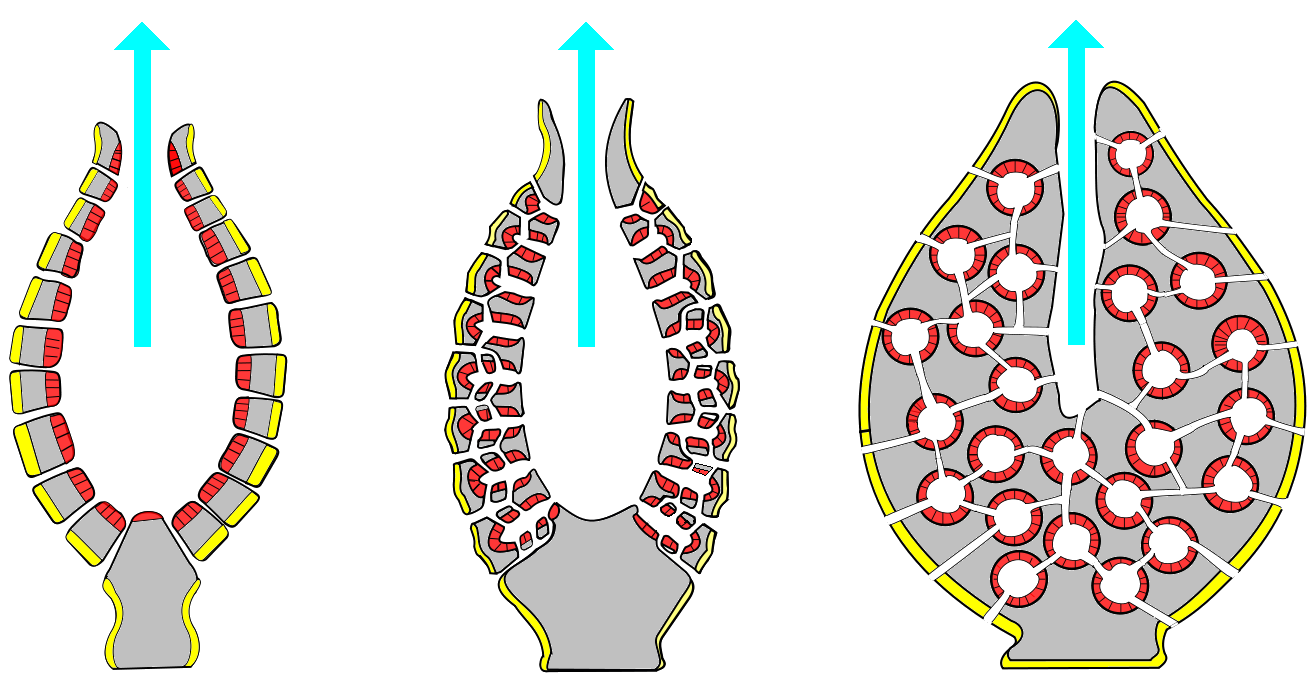Porifera, also known as sponges, are a diverse group of aquatic animals that are characterized by their porous body structure and the presence of a system of canals and channels. The canal system in porifera is a key feature that allows for the efficient movement of water and nutrients throughout the sponge’s body. The canal system can be broadly classified into three types: ascon, sycon, and leucon.
Table of Contents
Ascon type:
The ascon type of canal system is the simplest and most primitive among the three types. It is characterized by the presence of a single, large central cavity called the spongocoel that is surrounded by a thin layer of cells. The spongocoel is connected to the outside environment through small openings called ostia. Examples of sponges with an ascon type canal system include the genus Ascon, Clathrina, and Leucosolenia.
Sycon type:
The sycon type of canal system is more complex than the ascon type and is characterized by the presence of multiple, interconnected canals and chambers. The spongocoel is divided into smaller chambers called coelomic compartments, which are connected by smaller canals called choanocytes. Examples of sponges with a sycon type canal system include the genus Sycon, Euplectella, and Leucosolenia.
Leucon type:
The leucon type of canal system is the most advanced and complex among the three types. It is characterized by the presence of a network of interconnected canals and chambers that are lined with choanocytes. The choanocytes are specialized cells that are responsible for the movement of water through the sponge’s body. Examples of sponges with a leucon type canal system include the genus Leucon, Spongilla, and Spongia.
Functions of Canal system:
- Water circulation: The canal system in porifera is responsible for the movement of water through the sponge’s body. This is accomplished through the beating of cilia on specialized cells called choanocytes, which line the walls of the canals and chambers. The water circulation brings in food and oxygen and removes waste products.
- Nutrient uptake: The water that flows through the sponge’s body is rich in dissolved nutrients, such as small planktonic organisms and dissolved organic matter. The choanocytes are able to filter these nutrients from the water, which are then used by the sponge to support its metabolism.
- Gas exchange: Porifera are aquatic animals that depend on dissolved oxygen for respiration. The water that flows through the canal system also brings in dissolved oxygen, which is used by the sponge for respiration.
- Defense: The canal system also plays a role in the defense of the sponge. The water that flows through the sponge’s body also carries in potential pathogens, but the sponge’s cells, such as choanocytes, can engulf and digest these pathogens, thereby protecting the sponge.
- Reproduction: Some species of porifera also use their canal system for reproduction. For example, some species release sperm and eggs into the water, where they are carried away by the current and can fertilize to form new individuals.
In summary, the canal system in porifera is a key feature that allows for the efficient movement of water and nutrients throughout the sponge’s body. The canal system can be broadly classified into three types: ascon, sycon, and leucon, each with different characteristics and examples. The ascon type is the simplest, sycon type is more complex and leucon type is the most advanced and complex. Understanding the canal system in porifera is crucial for understanding the morphology and physiology of these organisms and their adaptation to different marine environments.
